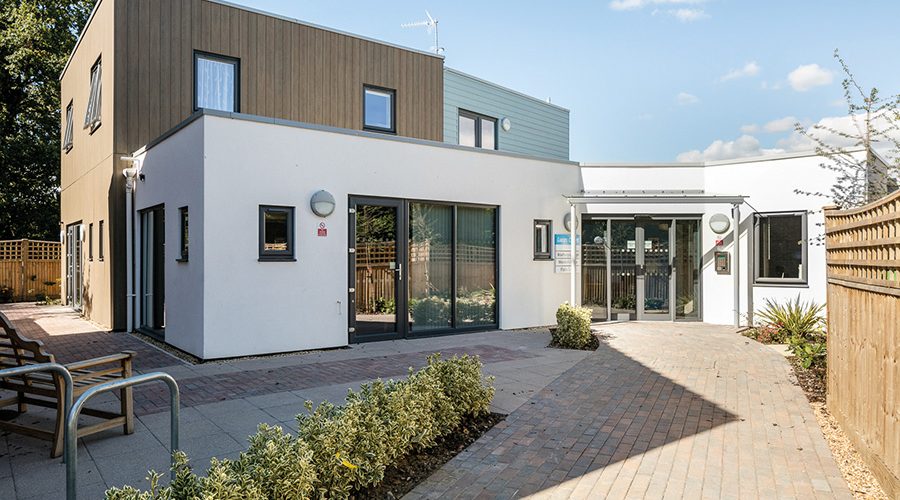Scott Leeder, Commercial Director at VELUX Modular Skylights, looks at the benefits of optimising the levels of natural light and ventilation in long-term healthcare and assisted living facilities.
VELUX
With an ageing population and growing incidence of Alzheimer’s and other age-related disorders, how we care for the elderly is more important than ever. As such, the design of long-term healthcare facilities is an integral part of creating a well-balanced, healthy programme of care.
A great deal of research carried out over the years provides compelling evidence to show that access to plenty of natural light and ventilation has a beneficial effect on the healing process and the health of patients and people in long-term care.
A study carried out by Elizabeth Brawley, for example, found that the care environment strongly influences the behaviour and quality of life of individuals with Alzheimer’s disease and dementia, as well as those affected by age-related change.
In her report ‘Designing for Alzheimer’s Disease’, Brawley shows that physical surroundings are effective in preventing and dealing with the loss of function-vision, hearing, mobility, social behaviour and mental competence. For instance, sleep disturbances are one of the more common symptoms of Alzheimer’s Disease and Related Dementia (ADRD). It is common for some ADRD patients to spend a third or more of the time at night awake, which results in an increased risk of falls and injury. Clinical research shows that high levels of natural light can help correct the rest/activity cycles of ADRD patients by rebalancing the circadian rhythm in both the home and care setting.
Furthermore, Impact of Light on Outcomes in Healthcare Settings by Anjali Joseph, PhD, states that light impacts human health and function by controlling the body’s circadian system, affecting mood and perception, and by enabling critical chemical reactions in the body. Studies also show that higher light levels are linked with better performance of complex visual tasks, and light requirements increase with age. By controlling the body’s circadian system, light impacts outcomes in healthcare settings by reducing depression among patients, decreasing length of stay in hospitals, improving sleep, lessening agitation among dementia patients, easing pain and improving adjustment to night-shift work among staff.
Architects working on the design of healthcare and residential care facilities should consider how they can incorporate optimum levels of natural light and ventilation to support a healthier and more comfortable environment for patients and residents in long-term care or assisted living. Critical to this is the amount of and positioning of the glazing, and rooflights or skylights are a very effective method of meeting this requirement.
Bringing the outside in
Lucas Court in Gosport, Hampshire, is a great example of a facility that has utilised rooflights to maximise the level of natural light. The Thorngate Churcher Trust development of 10 affordable housing flats, a new communal lounge and public areas, partly funded by Homes England, was officially opened by the Duke of Gloucester (who studied architecture at the University of Cambridge) in April 2018. A combination of daylight and natural ventilation have helped ‘bring the outside in’ for residents at the assisted living facility.
Recognising the substantial benefits access to optimum levels of natural light and ventilation have on our health and wellbeing, Bloomfield Parker Architects linked the public and private areas at Lucas Court with a long, elongated atrium, which was achieved using 64 VELUX Modular ridgelights.
Once John Bloomfield, Architect at Bloomfield Parker Architects, had settled on the idea of creating a naturally-lit space, he initially considered a patent glazing system. However, it was found that the scheduling requirements of building this on site would have added unnecessary complexity.
Following a meeting with VELUX Modular Skylights, in which the architects learned more about the benefits of specifying a modular ridgelight system, a decision was taken to progress with this option. The inspiring design of the atrium transforms what would otherwise be a lacklustre corridor, into a naturally-lit, tranquil space that residents and visitors can use and enjoy.
One resident explains: “It really does feel as though we are looking to the outside. It is wonderful just to sit here and chat with neighbours and feel as though we are in the open air.”
Had this space been built with a traditional tiled roof, it could effectively be described as a corridor, creating a functional conduit, rather than the inspiring space that the client was seeking.
Anne Taylor, Chief Executive Officer at Thorngate Churcher Trust, said: “We are delighted with the finished result and have received some great feedback from residents. The atrium is a really valued part of the new development and can be used by residents all year round.”
Summary
With the design of care facilities having an impact on a resident’s health and wellbeing, and the benefits of natural light, ventilation and temperature control far outweighing those of artificial options, a growing number of architects are choosing skylights as part of their scheme.
Specifying a skylight system that offers all the off-site benefits of being fully pre-fabricated in a factory-controlled environment, ensures that they fit right, first time, every time on site – and can be up to three times faster than a traditional installation. The modules simply fit into place, minimising time spent on the roof and ensuring a watertight seal is achieved exceptionally quickly. This is vital for managers and builders that are working to a tight deadline and need the development of new buildings to complete on time and to budget.”









